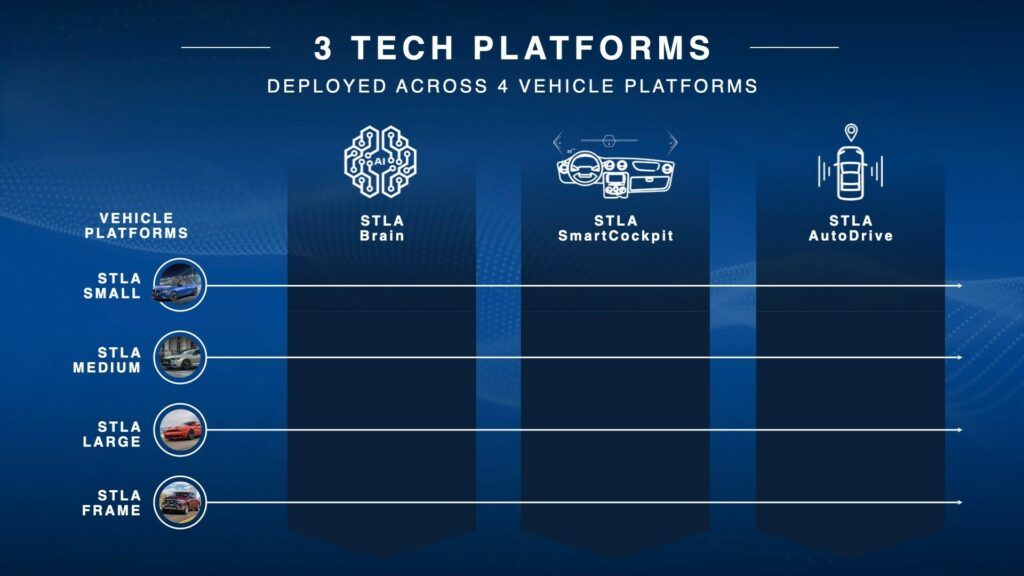- The new STLA AutoDrive system will replace Stellantis’ current Hands-Free Active Driving Assist.
- Controlling all of the new technology will be the STLA Brain architecture.
- Stellantis will roll out its new AutoDrive functions in 2025.
At the annual Stellantis Investor Day, the automotive giant previewed three new technology platforms powered by artificial intelligence. These platforms will be shared across its four global brands. Among them is a new semi-autonomous driving system named STLA AutoDrive, poised to compete with GM’s Super Cruise and Ford’s BlueCruise.
At the core of the new Stellantis technology package is STLA Brain, an electronic architecture fully integrated with the cloud. This centralized computing platform provides access to all vehicle sensors and actuators.
Read: Stellantis Could Drop Some Suppliers And Make More Of Its Parts In-House
The STLA Brain architecture will run on Qualcomm chips, enabling Stellantis to halve the number of ECUs required in its new vehicles. Additionally, it will support over-the-air updates and reduce the development time for new features by 75%.
The most important new feature for drivers presented during the investor day is STLA AutoDrive. While Stellantis already has a Level 2 hands-free driver-assist system on the market, unimaginatively named the Hands-Free Active Driving Assist, STLA AutoDrive will replace this function.
Development on this system has been ongoing since 2021, and it will be ready for production later this year and will be introduced across several models in 2025.
Stellantis says AutoDrive will support Level 2, 2+, and Level 3 autonomous driving capabilities. This means that in addition to allowing for hands-free driving, it won’t require drivers to keep their eyes on the road. Stellantis hasn’t said how far off the Level 3 system is but AutoDrive will be steadily updated to grow the average time between requests for driver intervention from 10 minutes to 20 minutes and eventually 40 minutes. The Level 3 functions will initially be restricted to highway use.
During the event, Stellantis also provided more details about the STLA Smart Cockpit. This consists of a new user interface that’ll be introduced across the company’s brands. It uses AI to individualize the system to different drivers and will incorporate ChatGPT for voice commands. Motor Trend reports that the menus will also be simplified and response times improved.




